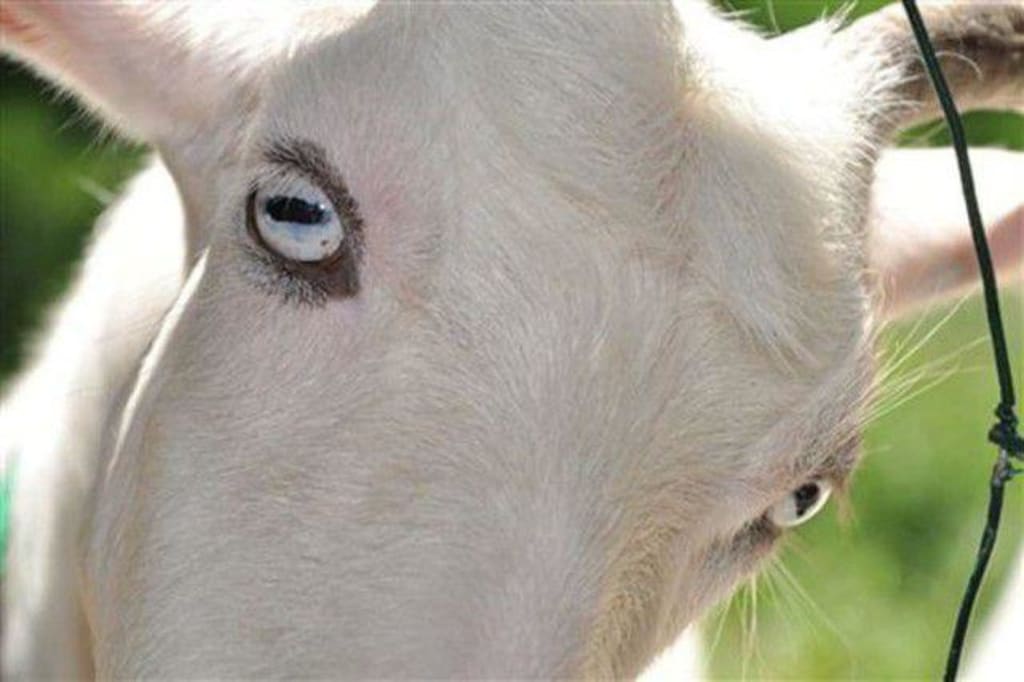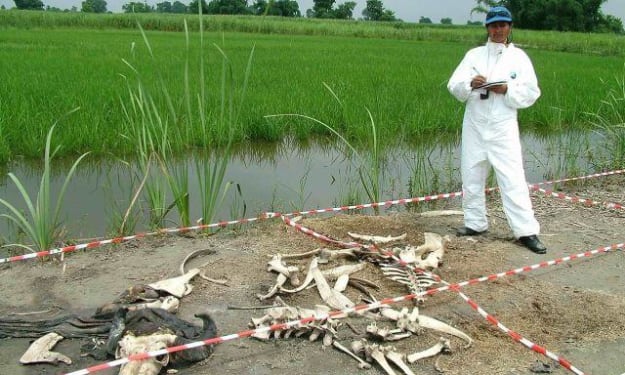The significance of the difference in the eyes between herbivores and carnivores
Visual predation hypothesis"

If you go to the zoo and watch some of the animals we are familiar with, you may find that the eyes of those herbivores are basically on the sides, while those of the carnivores are basically in front.
So, we often think that the two eyes grow in front of the carnivore, and the long side is the herbivore.
In fact, it is not absolute, especially for carnivores, their two eyes are not absolutely in the front, in fact, and herbivores as long as the sides may be more, such as some predatory birds, most fish and reptiles, etc., even if they are top predators, their eyes are basically on the sides.
So how long animal eyes in the end and what has to do with it? Why do all the familiar predators have their eyes in front?
Before we get into the discussion of the problem, we need to understand some basic information about the eyes of animals.
How do animal eyes image?
In fact, the imaging principle of our eyes is somewhat similar to convex lens imaging, except that light entering the eye will undergo a more complex process, not simply a convex lens imaging.
We know that an important application of convex lens imaging is the camera, and if you want to know what our eyes should have seen, the simple answer is pretty much the same as a photograph.
So now there is a question, since our eyes are just "taking pictures", why do we see a completely three-dimensional world, rather than two-dimensional as in a photo?
In fact, the answer is very simple, this is the result of the brain and the two eyes work together.
The brain will be based on the two eyes to take a slightly different photo, simply measure the "depth" of the latitude, this is actually very interesting, we see the world is actually "modified" by the brain.
The brain to create "depth" there is a key point, that is, the two eyes must be photographed to the same scene, which means that the two eyes must be in a direction, and then because of the existence of a certain distance between the two eyes, so the scene will be photographed slightly different, the brain is based on this to determine how far away from the object in front of you.
Here is another tip, in fact, the brain on the "depth" of the projection is only effective for short distances, for the human eye only 5 meters, the brain can clearly estimate the distance, more than 5 meters, our brain will be replaced by the relative size and relative movement to estimate the distance, into an empirical judgment, this time it is easy to appear optical illusion.
If it's just an ordinary two-dimensional photo, we can feel the "depth", but it's hard to judge the distance accurately. So the ability to accurately sense "depth" is the most significant advantage of having two eyes in one direction.
This advantage is especially important for predators, because they need to keep a close eye on the prey, to maintain the distance and prey in order to better attack.
This is one of the reasons we are familiar with those predators eyes are long in the front.
If two eyes grow in one direction, you can get a "stereoscopic vision", then two eyes grow on both sides, it is actually possible to get a "panoramic vision" - can do 360 degrees basically without death. It is possible to do 360-degree detection basically without any dead angle.
For herbivores, they do not need to hunt, they need more when the danger is fast escape, and to escape more quickly, it is important to find predators more quickly.
The eyes are long on both sides, which can greatly increase their detection range and see predators in all directions, which helps to spot predators faster.
This explanation is in fact the famous "visual predation hypothesis", the hypothesis that the eyes of carnivores grow in front to better locate prey. But as we said earlier, not all carnivores are growing their eyes in front of them.
Then the question arises, why do lions, tigers, wolves and other predators need to grow their eyes in front to judge the "depth" in order to better locate prey, while snakes, fish, eagles, their eyes do not have to grow in front of the top predator can do?
Other roles for eyes growing right in front
The way the eyes grow, primates are actually a very special group, whether they are herbivorous gorillas, pure meat-eating spectacled monkeys, or omnivores like us humans, the eyes grow right in front.
This is enough to show that the eyes grow in front of the animal is not exactly to locate prey, it will also have some other role.
Currently there are two other mainstream hypotheses, one is that both eyes are long in front will have better night vision; the other is the "X-ray vision hypothesis," meaning that the two eyes in the same direction of the animal has the effect of perspective.
Owls and other eagles are the top predators of birds, the biggest difference is that only owls have eyes in front (birds do not need eyes in front behind the explanation), other eagles have eyes on the sides.
The reason why the owl's eyes are so special is actually because it is a nocturnal hunting animal. If both eyes are grown in front, the eyes can receive more light for the designated prey, thus making the night vision more prominent, which facilitates night hunting.
The ancestors of primates are now considered to be nocturnal predators - somewhat like the present-day spectacled monkeys, which is one of the reasons why all primates now have eyes that are grown in front.
As for the X-ray vision hypothesis, many people may wonder what the eye has to do with perspective. In fact, the principle is very simple, as long as we place a pen in front of our eyes, you will find that when both eyes look ahead at the same time, you can see the scene behind the pen, but when we close one eye and use only one eye to see, then the scene behind the pen will be more than obscured.
Those animals that live in cluttered forests many times need such long eyes to move better in the jungle, and this is another reason why all primate eyes are long in front.
Finally: why do some predators not have to grow their eyes in front?
From the previous we look at the role of eyes long in front, it is not difficult to find that the eyes so long animals are not necessarily to better locate prey, but certainly amplify the role of the animal's visual perception, or increase the reliance on vision.
But in fact, animals whether hunting, or determine when to escape, they are not only through vision, there are many senses at play.
In the case of snakes, they generally creep in the grass, eyes are optional for them because there are weeds everywhere that block the view, and they can't see with their eyes.
So many snakes are highly myopic, they mainly through the sense of smell and hearing to determine and locate listed, so their eyes how long the impact on hunting is not particularly large.
The same is true for fish, they are not vision-dependent animals, so they do not need "stereo vision" to target prey.
As for the eyes of some eagles, they do grow on both sides, but that doesn't affect their "stereoscopic vision" because their heads are so small that they don't block both eyes from looking straight ahead.
If you look closely at those predators with eyes on both sides, you will find that their heads are indeed very small, when hunting their will quickly become "cock-eyed mode".
About the Creator
Vicky
The world is so wonderful, let's get to know the world together!
Enjoyed the story? Support the Creator.
Subscribe for free to receive all their stories in your feed. You could also pledge your support or give them a one-off tip, letting them know you appreciate their work.






Comments
There are no comments for this story
Be the first to respond and start the conversation.